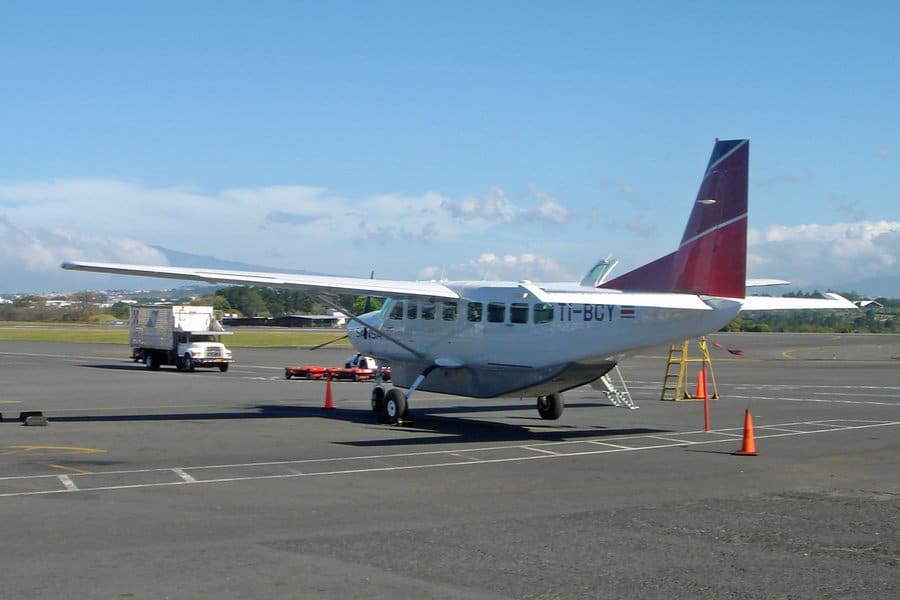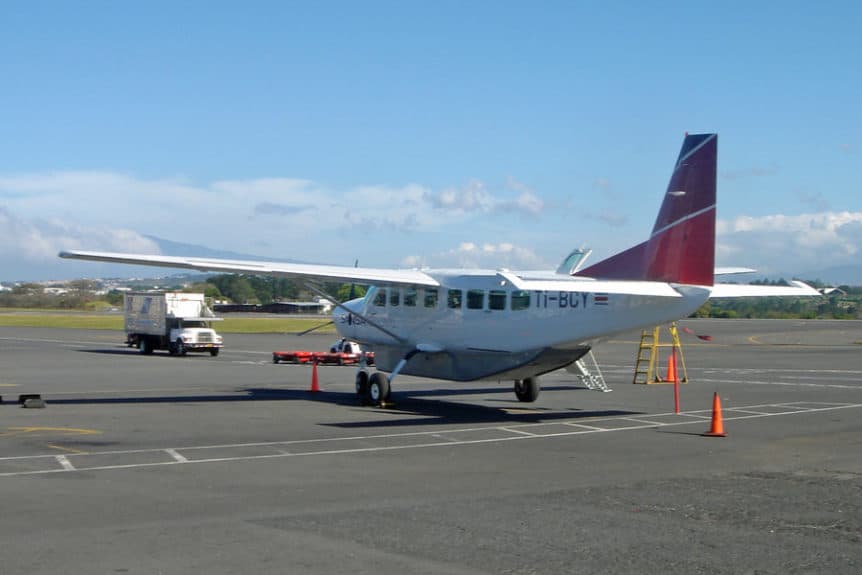
Despite being a relatively small country geographically, Costa Rica is renowned for its well‐developed domestic flight network. This network plays a critical role in connecting remote tourist destinations—such as the beaches of Tamarindo and the rainforests near Puerto Jiménez—with major hubs like San José (Juan Santamaría International Airport) and Liberia (Daniel Oduber Quirós International Airport).
Travelers often choose domestic flights to save considerable time compared to road travel over winding and sometimes challenging terrain. The market has historically been served by a handful of carriers, with SANSA Airlines consistently operating the broadest network of scheduled flights within the country.
SANSA Airlines: History and Evolution
Founded in 1978
SANSA Airlines (Servicios Aéreos Nacionales S.A.) was established in 1978 as a domestic subsidiary of LACSA (the former state airline). This move allowed LACSA to focus on international routes while SANSA took charge of connecting smaller, local destinations. Over the decades, SANSA has built a reputation as a workhorse for Costa Rica’s domestic market.
Ownership Changes and Modernization
After decades of operation under the LACSA umbrella—and later under Avianca’s broader network—SANSA underwent significant ownership restructuring. In 2019, Avianca Holdings sold SANSA to Regional Airlines Holding LLC. This change aimed to streamline operations and adapt to evolving market demands, including modernizing the fleet and service standards.
Fleet and Operational Characteristics
Fleet Composition
SANSA operates a fleet primarily comprised of 14-passenger aircraft such as the Cessna 208B Grand Caravan and its upgraded versions. These aircraft are particularly well-suited to short-haul flights, offering flexibility to operate from smaller airstrips in tourist areas.
Route Network and Destinations
The airline serves over a dozen domestic destinations including:
- San José (SJO) – The primary hub for both domestic and connecting international flights.
- Liberia (LIR) – Gateway to the Pacific coast in Guanacaste.
- Tamarindo, La Fortuna, Nosara, Puerto Jiménez, Quepos/Manuel Antonio, Tambor, Tortuguero, and others.
By focusing solely on point-to-point routes that always connect through San José, SANSA ensures that even the most remote destinations are linked efficiently with the country’s main international gateway.
Service, Safety, and Customer Experience
Safety and Reliability
SANSA Airlines has built its service on decades of operational experience. The airline is known for maintaining a strong safety record, even when operating in challenging environments such as mountainous airstrips or weather-prone regions. Regular maintenance schedules and a relatively simple fleet structure (with a focus on proven aircraft models) have contributed to its safety record over the years.
Customer Service and Operational Challenges
While many travelers appreciate SANSA’s extensive network and competitive pricing (often just a few dollars cheaper than its rivals), the airline has faced criticism regarding customer service. Passengers have reported issues ranging from last-minute flight changes to baggage handling complications. Given that domestic flights typically have strict weight limits (to ensure safe aircraft performance), passengers are advised to double-check luggage rules and arrive well ahead of departure times to avoid delays.
The Broader Context of Domestic Air Travel in Costa Rica
Airport Infrastructure
Most domestic flights depart from either Juan Santamaría International Airport (SJO) or the smaller, specialized domestic terminal at SJO, while other flights operate out of regional airstrips. For example, many travelers flying to destinations like Tambor or Nosara will experience a significantly different airport environment compared to the large international terminals. This diversity in airport infrastructure is part of the charm—and occasional challenge—of flying within Costa Rica.
Competitive Landscape
In recent years, the domestic market has seen increased competition from carriers such as Costa Rica Green Airways and Skyway Costa Rica. Although these competitors offer alternative options and sometimes more modern reservation interfaces or slightly different route networks, SANSA remains the most established name due to its long history and extensive route coverage.
Expert Recommendations for Travelers
- Plan Ahead: Domestic flights in Costa Rica are often sold out during peak tourist seasons. Booking early can ensure availability and lock in lower fares.
- Understand Baggage Policies: Given the smaller aircraft size, weight restrictions are strictly enforced. Review SANSA’s specific baggage rules before traveling.
- Arrive Early: With separate domestic terminals and often minimal on-site facilities, arriving 60–90 minutes before departure is advisable to account for check-in and security procedures.
- Stay Informed: Flight schedules can sometimes be subject to last-minute changes due to weather or operational challenges. Checking flight status via real-time tracking apps or contacting the airline before traveling is recommended.
Final Thoughts
SANSA Airlines plays an indispensable role in connecting Costa Rica’s diverse landscapes—from bustling tourist centers to remote natural paradises. Its long history, specialized fleet, and comprehensive network have made it a cornerstone of Costa Rica’s domestic transportation infrastructure. While there may be occasional service hiccups, SANSA’s overall contribution to the country’s tourism and connectivity remains highly significant.
For anyone planning to explore Costa Rica by air, understanding both the benefits and the practical aspects of flying domestically with SANSA will help in crafting a smooth and memorable travel experience.

